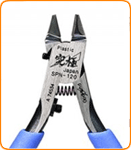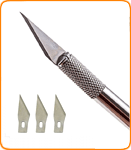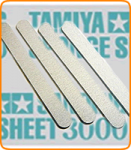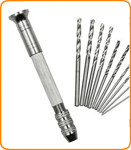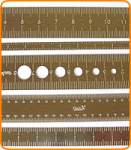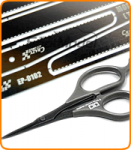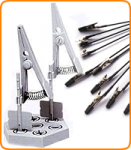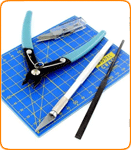Model Factory Hiro K822 1/12 LOTUS TYPE 88B 1981 Rd.9 British GP #11 Elio de Angelis / #12 Nigel Mansell
LOTUS founder and principal design engineer Colin Chapman is well known for bringing ground effect design to F1 - with the team's first two ground effect cars, Lotus 78 and Lotus 79, bringing great success to the team. However due to increasing accidents caused by such cars regulation changes were made to the 1981 season to curb designs that generate such ground effects. Always the innovator, Chapman designed the "LOTUS TYPE 88" for the 1981 season, hoping to retain strong ground effect while adhering to the new regulations.
The LOTUS 88 featured a twin chassis: a concept that came to be through the combined efforts of Chapman, chief designer M. Ogilvie and aerodynamics specialist P. Wright. The body, side and wings acted as one chassis (outer) and the monocoque would perform as the second chassis (inner), and both were linked by a series of suspensions. The design allowed the outer chassis to "sink" as the car accelerated, effectively creating ground effect through immense amounts of downforce. The monocoque was also made from carbon fibre as opposed to the aluminum alloy mainly used up to that point, making it one of the earliest F1 machines to feature a carbon based monocoque.
The LOTUS 88 was first brought to light at the first race of the 1981 season, and while it passed inspections at first the decision was later overturned by FISA (currently known as the FIA) for overstepping regulation rules and the car was banned from racing. After a second failed attempt at the following race it was later upgraded to "TYPE 88B" for the British GP, but was again banned from racing. This marked the last attempt that Chapman tried to enter the LOTUS 88 into races.
As a designer always looking for new and innovative ways to bring his ideas to life, Chapman lost interest in F1 after seeing his own ideas banned from the racetrack and turned his attention to light aircraft design. In December of the following year of 1982, Chapman passed away at the young ages of 54. On the day of his passing, the Lotus team would be testing another one of his innovative ideas on the LOTUS TYPE 92 - the active suspension system which would become the next design marvel in F1 for creating downforce.
- based on the 88B that was bought to the British GP in 1981. The version put on display at the event at Norwich Airport in August 1981 post the British GP is also constructable.
- a full detailed, multi-material kit featuring white metal, resin, etching, turned parts, rubber tires, silk screen decals and various cords allowing for maximum representation of the original vehicle.
- the famous "twin chassis" has been faithfully replicated, with the outer chassis able to move on springs as per the original design of the Lotus 88.
- aluminum turned parts used for wheel rim and engine funnels.
- cowl can be removed, allowing full view of the detailed interior after completion.
The LOTUS 88 featured a twin chassis: a concept that came to be through the combined efforts of Chapman, chief designer M. Ogilvie and aerodynamics specialist P. Wright. The body, side and wings acted as one chassis (outer) and the monocoque would perform as the second chassis (inner), and both were linked by a series of suspensions. The design allowed the outer chassis to "sink" as the car accelerated, effectively creating ground effect through immense amounts of downforce. The monocoque was also made from carbon fibre as opposed to the aluminum alloy mainly used up to that point, making it one of the earliest F1 machines to feature a carbon based monocoque.
The LOTUS 88 was first brought to light at the first race of the 1981 season, and while it passed inspections at first the decision was later overturned by FISA (currently known as the FIA) for overstepping regulation rules and the car was banned from racing. After a second failed attempt at the following race it was later upgraded to "TYPE 88B" for the British GP, but was again banned from racing. This marked the last attempt that Chapman tried to enter the LOTUS 88 into races.
As a designer always looking for new and innovative ways to bring his ideas to life, Chapman lost interest in F1 after seeing his own ideas banned from the racetrack and turned his attention to light aircraft design. In December of the following year of 1982, Chapman passed away at the young ages of 54. On the day of his passing, the Lotus team would be testing another one of his innovative ideas on the LOTUS TYPE 92 - the active suspension system which would become the next design marvel in F1 for creating downforce.
- based on the 88B that was bought to the British GP in 1981. The version put on display at the event at Norwich Airport in August 1981 post the British GP is also constructable.
- a full detailed, multi-material kit featuring white metal, resin, etching, turned parts, rubber tires, silk screen decals and various cords allowing for maximum representation of the original vehicle.
- the famous "twin chassis" has been faithfully replicated, with the outer chassis able to move on springs as per the original design of the Lotus 88.
- aluminum turned parts used for wheel rim and engine funnels.
- cowl can be removed, allowing full view of the detailed interior after completion.
| General Info | |
| Scale | 1/12 |
| Type | Scale Model Kit |
| Subtype | Racing Car |
- Stock: Out Of Stock
- Reward Points: 864
- SKU: MFH-K822

Model Factory Hiro
MRP: US$679.22 Save: US$117.88
17% OFF
US$561.33
(excl. Tax)
"In-Stock" Really Means It
Combine Shipping & Save
SAME or Next day shipping*
Pay in 4 interest-free payments of US$140.34. Learn more
There are no reviews
Maybe you can help? Many users will be grateful to you. And so are we.


































